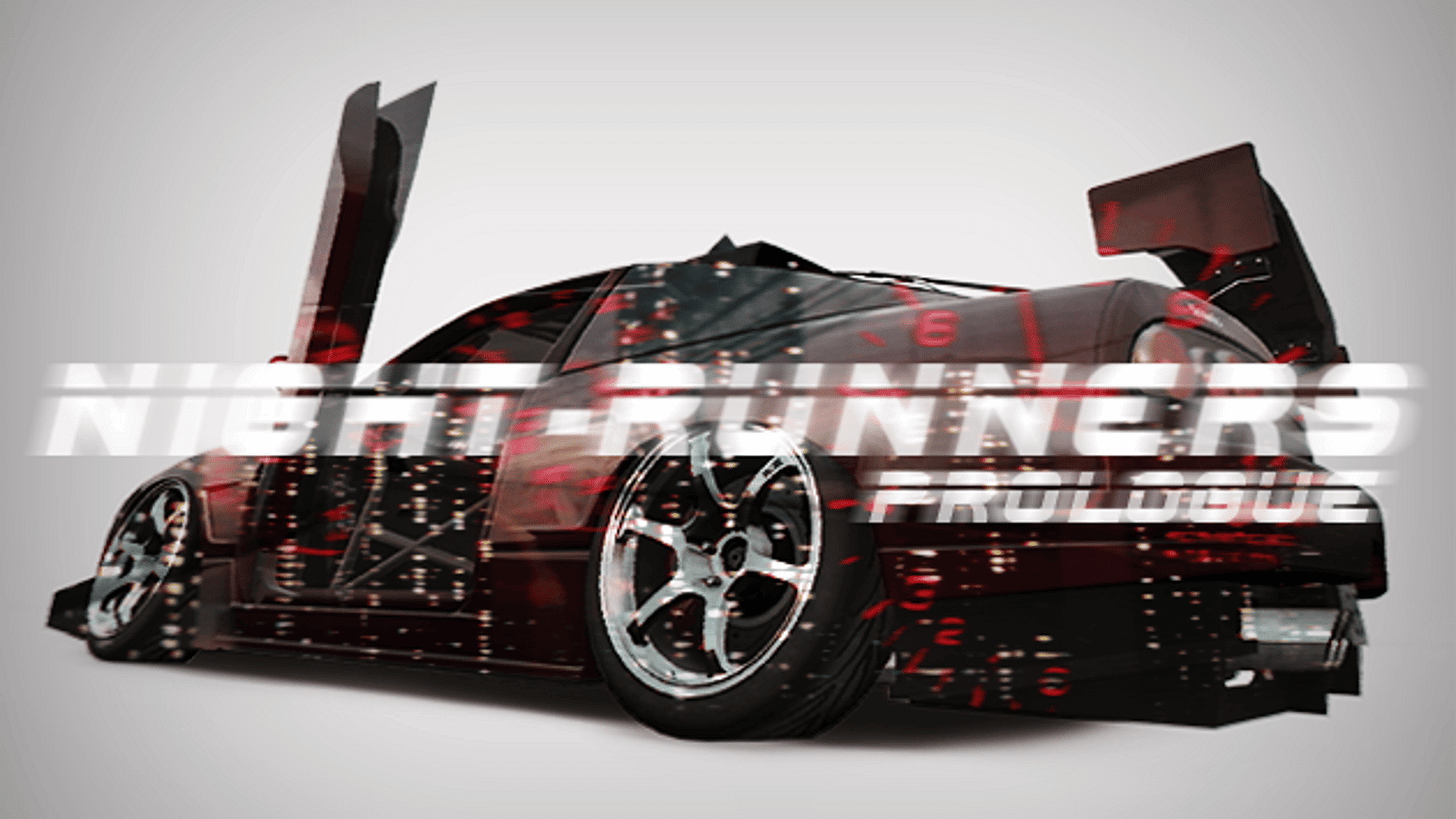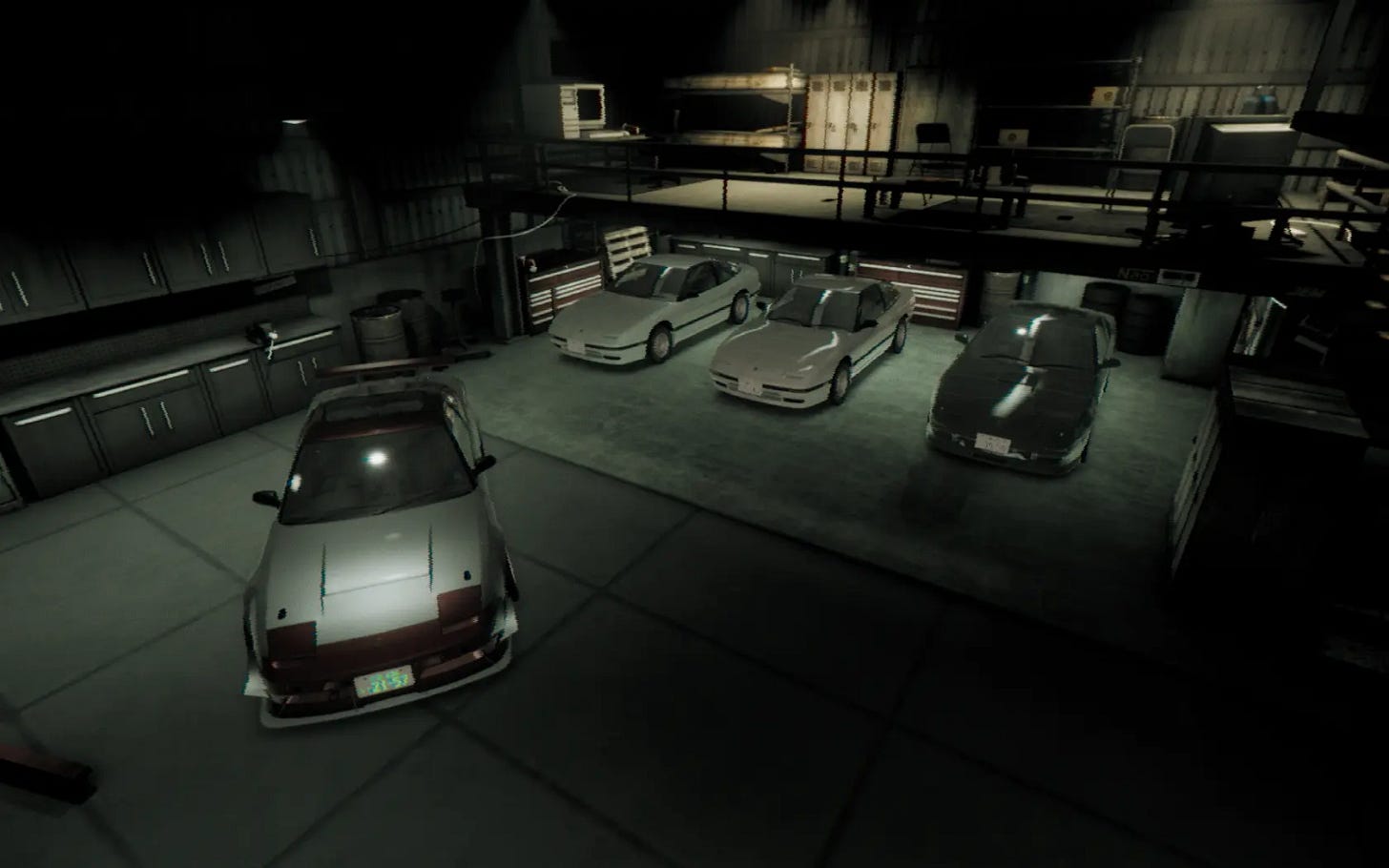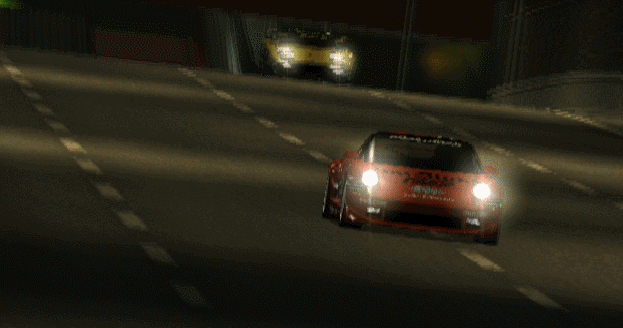Aesthetic music placements in games - Night-Runners
I'll say Aesthetic one more time...and a few more times in this post.
I recently discussed the the resurgence of the Y2K aesthetics delivered exclusively through gaming products. Night-Runners is one step further, balancing between the realism of a pre-internet sub-culture and the gamification using the y2k aesthetic. What is the glue between this that makes it so brilliant? Yeah you guessed it - it’s the music.
I’m going to tell you about this game, explain what impact it has, and what it could tell us about the future from the music industry’s perspective.
What is Night-Runners?
Why is this an important game?
What comes next?
1. What is Night-Runners?
Here’s the description from Steam (where it is titled Night-Runners Prologue as it is not finished just yet):
“Descend into the underworld of Japanese street racing. Set between 1990-2009, join the local street racing crews in their battle for territory control. Explore the real location open world(s), compete in wager races, battle other crews and upgrade your vehicles with detailed car customization.“
Full of Japanese Domestic Market (JDM) cars and dripping with the aesthetic of the era, visuals through 16:9 VHS, CRT monitor feel, and just for good measure scored by some of the most dedicated underground drum & bass/jungle tracks and ambient vapourwave interludes. Oh, and one more thing - it’s made by a single developer under the name PLANET JEM. Here’s their kickstarter or their patreon.
Night-Runners is the sort of game I’d tell people is my favourite game without even playing it because it makes me look cool. With a committed aesthetic that slots into popular culture right now, why don’t you do the same thing? Here’s the playlist of the OST, including the first track which is the lead track for this game.
This 6 minute trailer gives a great brief demonstration of the aesthetic of the game. Alternatively, here is a video titled ‘When the Night-Runners music kicks in’, or even better, this 30 second clip titled ‘That one song from night-runners‘ that has over one million views on YouTube. Music clearly has a huge part to play with this game:
2. What makes this game important?
This game is possibly the most aesthetic game I’ve ever played; the graphics, gameplay, and music all stylised and working together to deliver. Let’s explore these three sections.
The Graphics
This game has gone one step further and really captured both reality and fiction. They have done a brilliant job in mirroring the authenticity of what it would have been like in that world and that era (video below), but they have built it in this early PS2 graphic interface with gameplay features similar to Wangan Midnight and Need for Speed Underground. Here’s a video of the Tokyo expressways and what those races would have been like, versus the game:
The Gameplay
Night-Runners offers the arcade elements that some of the original fans would love, however the customisable element is incredibly elaborate. Aside from the predictable features of a racing game of this genre, there is one feature that tears this apart from the rest. You start off in your own garage where you can walk around and explore your area. Your cars are all here, and in order to upgrade them you have to manually edit them. For example, you can make your car lighter by opening your car door, getting into your car and manually taking the back seats out and just putting them somewhere. Just having the ability to walk around outside of your car is an answered call by fans of this genre.
The Music
But here is the holy grail. The commitment to the aesthetic comes into play with two main features - the soundtrack itself, as well as the way it is used.
Firstly, in your garage, there is a boombox that plays music at random within the OST, and it gets louder the closer you get to it. I’ve written about how scarcity in music can be done well.
Secondly, when you are playing the game, the music in your car only goes to max volume when you are going at speed. This is a great feature as it encourages players to enjoy the full throttle pace of the game, and also turns down the volume when you slow down and are looking where to go, like we all do when we drive for some reason.
And finally, the music choices are committed to match the aesthetic. This excellent and dedicated selection greatly assists the storytelling, helping capture the target feel of the game alongside the stylised PS2 graphics and relating to the realism of the era through its gameplay. The songs are all incredible and you should spin this ambience next time you’re driving late at night.
There are many playlists out there that are now using ‘Night-Runners’ as an emulation of this aesthetic, and many many more out there with thousands of followers:
The featuring track for Night-Runners is called ‘Cartz’ and it is by an artist called ‘gum.mp3’. As of this moment, this track has 593k Spotify plays. Some of his other biggest tracks are slightly less than this, with a majority of his tracks sitting just above 100k.
Under the ‘Discovered On’ section it lists 38 playlists where this artist has been found, where 12 have been Night-Runners themed playlists, and an additional 8 are themed around similar racing themed gaming aestheticsm which is a fair chunk of proof that discovery through this game’s relation has had an impact.
Also, in one YouTube video I came across, I saw this:
3. What comes next?
There is a clear statistical impact of music included within this game, both for the game’s committed aesthetic and the artist’s loyalty to their genre, however without knowing more of the data side I can’t tell how much this game has. As this game comes into complete and ongoing development, and providing it keeps its reputation of 94% of 10k players upvoting it, this will likely have a positive impact on plays, fandom, and even genre-association going forward.
Here’s a few observations I’d make here.
Games are becoming more accessible to make, proven by this incredible game preview being created by one person. With green lighting functions like Patreon and Kickstarter, indie developers can fill the gaps that people have asked for that the AAA developers may not feel there is a big enough market for their level of investment.
The result of this is more opportunities of sub cultures existing in a gaming space, and therefore more opportunities for artists having the freedom to write their own aesthetic and being able to find a home for their music in a game. This means that artists won’t need to alter their aesthetic to suit a popular game, or ask a game developer to make costly exceptions for them. This space, when accessed early, may well built in importance in years to come.
Being accurate to reality, like this game truly is, makes this game timeless. Being timeless means being a fan of this game and referencing it won’t accidentally turn your declaration of fandom into an awkward memory like your 2014 man bun. Longevity with a timeless game can be identified early.
Indie games with this much dedication to aesthetic can lead to discovery of the music of that sub culture and vice versa, as we may well see gum.mp3 post-release.
TLDR
Night-Runners Prologue is setting up to maintain its status as being too-cool-for-school through its sheer commitment to an aesthetic. Artists can hold out hope that more games like this, with aesthetics that feel more at home with their music, will exist. It is worth exploring and starting those conversations. As an artist, identify what feels right and works with your story - finding community with like-minded creators through a commitment to an aesthetic is a safe bet.








